The abandonment rate in the financial industry can be reduced — but only by addressing the underlying causes and redesigning digital experiences with real user needs in mind.
Protecting and verifying: how security features in identity documents have improved

The security of an identity document relies on the combination of several security features. By employing multiple characteristics, the task of counterfeiters is significantly complicated, as they would need to accurately reproduce each feature and its interactions.
I
dentity documents have undergone significant evolution throughout history, adapting to increasing demands for security and functionality. From simple inscriptions to advanced electronic cards, the security features incorporated into these documents have evolved to prevent fraud and ensure authenticity.
Historical evolution of official documents
During the Middle Ages, passports and letters of recommendation were the most common methods for identifying individuals, often incorporating wax seals and signatures to authenticate their validity. However, these methods were prone to forgery and did not offer a high level of security.
With the advent of the industrial era and the increase in global mobility, there emerged a need for more robust and harder-to-falsify identity documents. By the late 19th and early 20th centuries, governments began issuing identity documents with photographs. The inclusion of a photo of the document holder significantly enhanced the ability to visually verify identity. This was one of the initial steps towards modernising identity documents.
Advances in document security from the late 20th century onwards
In the latter half of the 20th century, more advanced printing techniques and additional security measures were introduced, such as special inks, watermarks, microprinting, and holograms. These technologies made forgery more challenging and provided multiple levels of verifiable authenticity. Furthermore, the incorporation of laminates and durable plastics enhanced the physical resilience of documents, making them more difficult to alter.
The arrival of the digital age in the late 20th and early 21st centuries marked another significant milestone in the evolution of identity documents. The introduction of electronic chips in passports and identity cards allowed for the storage of biometric information such as fingerprints and facial data, offering a more precise and secure method of verifying identity. These electronic documents are designed with multiple layers of digital security, including advanced cryptography, to protect the stored information and ensure that only authorised entities can access it.
Security features to hinder counterfeiters
Modern physical identity documents utilise both visible and hidden security features to ensure their authenticity and prevent forgery. Here are some of the most common and sophisticated ones:
- Kinegrams: These three-dimensional holographic elements display moving images or changing colours when the document is tilted. Their complex and dynamic design makes them extremely difficult to replicate.
- Optically Variable Inks (OVI): Inks that change colour or reveal different images when viewed from various angles or under different light sources. They are widely used in logos, backgrounds, and other graphic elements.
- Laminates: Security laminates are applied to documents to protect them from tampering and counterfeiting. They may include microtext, latent images, or integrated holographic elements.
- Seals: Security seals can be dry or wet and often contain microtext, latent images, or holographic elements. They are used to authenticate the signature of the issuing authority.
- Microtext: Extremely small text, almost invisible to the naked eye, which contains important information about the document.
- Fluorescent fibres: These fibres embedded in the paper of the document emit light under ultraviolet light, creating unique and hard-to-replicate patterns.
- Watermarks: Invisible images that become visible when the document is held up to the light. They can be either static or dynamic.
- Microperforated elements: Tiny holes that form specific patterns and are difficult to replicate.
- Thermochromic inks: These inks change colour when exposed to heat, allowing for the verification of the document’s authenticity.
- Security threads: Fibres embedded in the paper that can be visible or invisible and contain microtext or images.
- Electronic chips: Contain biometric information of the holder, such as fingerprints or facial recognition data.
- Magnetic stripes: Store encoded information that can be read by special devices.
- Guilloches: Intricate linear patterns that are difficult to replicate.
Critical sectors and the importance of rigorous document analysis
Rigorous verification of identity documents is not merely a formality; it is a fundamental pillar of security and trust across multiple sectors, as well as a crucial element in identity verification processes. Here are some of the most sensitive industries where thorough analysis is essential:
- Financial services: Preventing money laundering relies on verifying customer identities to ensure that bank accounts are not used for illicit activities. Additionally, assessing the solvency and identity of loan applicants is crucial to minimise the risk of default.
- Healthcare: Access to medical services requires verifying patients’ identities to protect the confidentiality of their medical data and prevent insurance fraud. In clinical research, for example, accurate identification of participants in clinical trials is fundamental to the validity of results.
- Government: Ensuring the authenticity of documents issued by authorities is essential to prevent identity theft. Moreover, verifying citizens’ identities is necessary for fair and equitable access to public services.
- E-Commerce: Protecting personal data in e-commerce relies on verifying customer identities to safeguard personal information and prevent fraud in online transactions.
- Travel and immigration: Border control depends on verifying travellers’ identities to ensure national security and prevent illegal immigration.
- Human resources: In recruitment, verifying the identities of job candidates is crucial to avoid hiring individuals with criminal backgrounds or those using false identities.
Keys to an advanced identity document verification solution
An advanced identity document verification solution should employ cutting-edge technologies such as OCR (Optical Character Recognition), facial recognition, and document authenticity checks. These technologies ensure that only legitimate and verified documents are accepted, helping organisations prevent fraud and identity theft. Additionally, providing real-time verification results with high accuracy enables organisations to quickly confirm the authenticity of identity documents, streamlining processes, enhancing security, and optimising the customer experience.
For comprehensive fraud protection, it is essential to incorporate advanced fraud detection and prevention measures, such as identifying counterfeit or stolen documents. Generating detailed verification reports for auditing and compliance helps organisations meet regulatory requirements such as Know Your Customer (KYC) and Anti-Money Laundering (AML), demonstrating adherence to industry regulations. Moreover, offering comprehensive user support, including tutorials, guides, and dedicated technical assistance, ensures effective use of the product. Flexibility in integration, through APIs and SDKs, and compatibility with popular operating systems, browsers, and mobile platforms, ensures the solution seamlessly adapts to existing systems, guaranteeing optimal usability.
Today, identity documents continue to evolve with the integration of new technologies such as mobile device authentication. The trend towards total digitalisation is reflected in the creation of digital identities, which provide a secure and convenient way to confirm identity without the need to carry a physical document.
Contact our document verification experts now and avoid the consequences of fraud
























